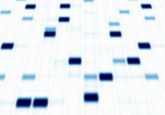Novel biomarker discovered for respiratory disorders

Tomoyuki Fujisawa and a group of 13 other scientists from Hamamatsu University School of Medicine (Shizuoka, Japan) have investigated the usefulness of plasma connective tissue growth factor (CTGF) as a substitute biomarker in asthma. They found that it could be used as a potential biomarker of airway obstruction for patients with asthma.
Research has also suggested that CTGF may play a major role in the development of airway remodeling and airflow limitation in asthma patients due to subepithelial fibrosis, which is a result of fibroblast activation rather than bronchial epithelial cell dysfunction.
The team measured plasma CTGF levels in a total of 148 patients, of which 45.2% had stable asthma and the rest were healthy. They correlated between plasma CTGF levels and the physiological parameters in patients with asthma. Patients with asthma had significantly higher levels of plasma CTGF; 1389 pmol/l in patients with stable asthma compared with 1135 pmol/l in the healthy patients – a difference of 254 pmol/l.
The asthma patients with their forced expiratory volume (FEV) below 80% had 1578 pmol/l, versus patients with FEV over 80% who had 1198 pmol/l, suggesting that the results were more affected by the FEV levels than by the fact that the patient had asthma. They found that there was a strong negative correlation between the plasma CTGF levels in patients with asthma and the forced vital capacity, also plasma CTGF levels were found to be negatively correlated with asthma control test scores.
The fact that CTGF levels correlated with both clinical and physiological parameters will ensure the utility of plasma CTGF level as a clinical biomarker of asthma. Through this, the authors concluded that plasma CTGF may be a potential biomarker for stable asthma when evaluating the degree of persistent airway obstruction.
Source: Kato M, Fujisawa T, Hashimoto D et al. Plasma connective tissue growth factor levels as potential biomarkers of airway obstruction in patients with asthma. Ann. Allergy Asthma Immunol. DOI:10.1016/j.anai.2014.05.026 (2014) (Epub ahead of print).




